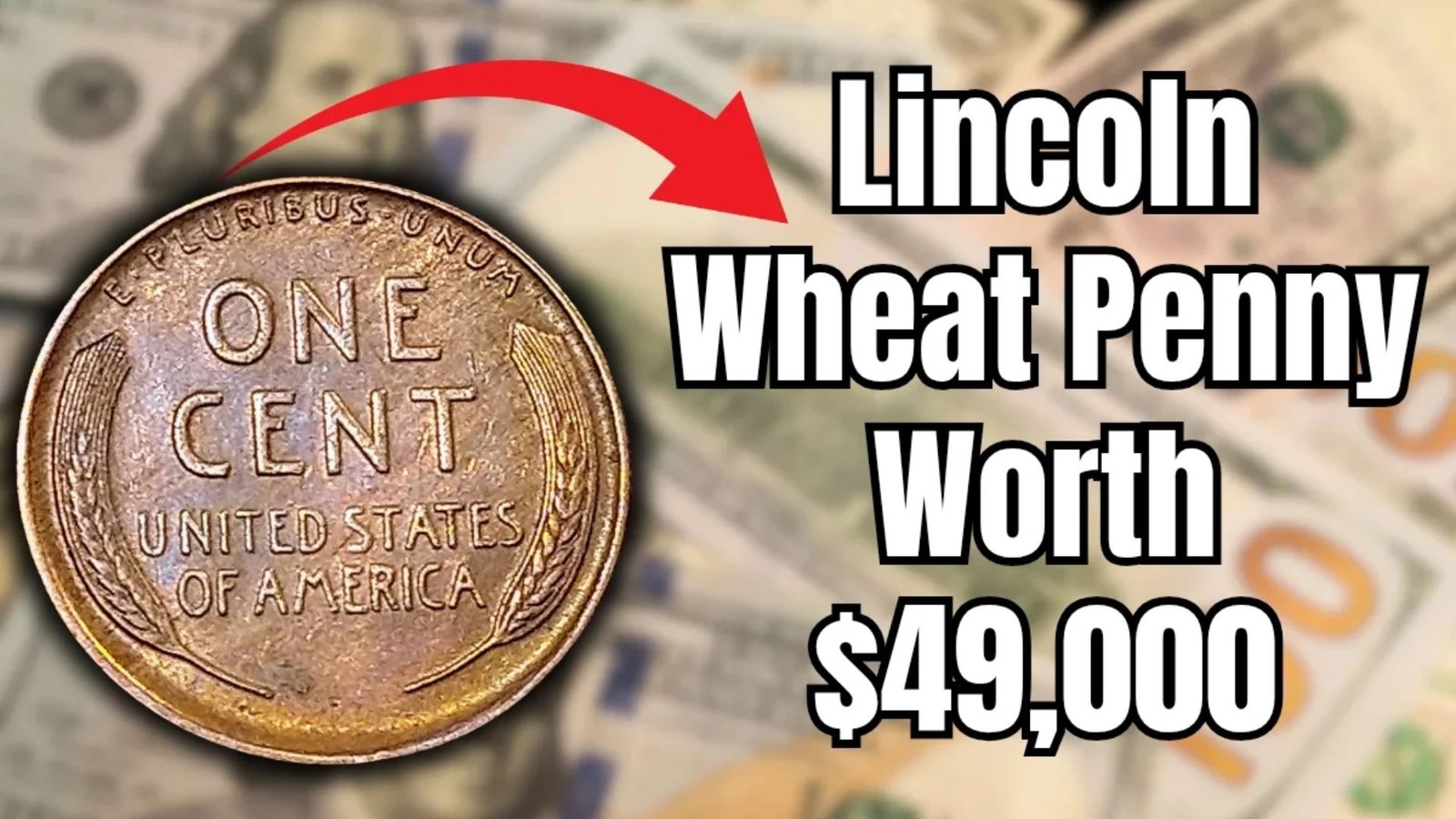Imagine finding a penny in your pocket worth $49,000! The Lincoln Wheat Penny, a small coin with big value, has captured collectors’ hearts for decades. Some rare versions fetch thousands at auctions. Curious if you own one? Read on to uncover the secrets of these valuable coins and how to spot them!
What Is a Lincoln Wheat Penny?
The Lincoln Wheat Penny is a one-cent coin minted in the U.S. from 1909 to 1958. Featuring Abraham Lincoln on the front and wheat stalks on the back, it’s a collector’s favorite. While most are worth pennies, rare ones can be worth thousands due to unique errors or low mintage.
History of the Lincoln Wheat Penny
Designed by Victor David Brenner, the Lincoln Wheat Penny debuted in 1909 to honor Lincoln’s centennial birth. It was the first U.S. coin to feature a president. The “VDB” initials on some 1909 coins caused controversy, leading to their removal, which sparked collector interest. During WWII, copper shortages led to unique steel pennies in 1943, with rare bronze errors.
Why Are Some Wheat Pennies So Valuable?
Rare Lincoln Wheat Pennies fetch high prices due to:
- Low Mintage: Coins like the 1931-S had only 866,000 minted.
- Mint Errors: Mistakes like doubled dies or wrong metal planchets (e.g., 1943 bronze) are rare.
- Condition: Uncirculated coins in pristine condition command premiums.
- Historical Significance: Wartime or early-year coins attract collectors.
For example, a 1944-D/S Wheat Penny sold for $49,937.50 due to its rare mint mark error.
How to Identify a Rare Lincoln Wheat Penny
Want to check your coins? Here’s how:
- Check the Date and Mint Mark: Look for key dates like 1909-S, 1914-D, or 1931-S. Mint marks (“S” for San Francisco, “D” for Denver) are below the date.
- Inspect for Errors: Look for doubled text (e.g., 1955 DDO) or unusual metal (e.g., 1943 bronze).
- Assess Condition: Use a magnifying glass to check for wear. Pristine coins are more valuable.
- Authenticate: Consult professionals like PCGS or NGC to verify authenticity.
| Key Date | Mint Mark | Estimated Value (MS60+) |
|---|---|---|
| 1909-S VDB | S | $700–$168,000 |
| 1914-D | D | $175–$158,625 |
| 1931-S | S | $80–$18,600 |
| 1943 Bronze | D | $100,000–$1,700,000 |
Notable Rare Wheat Pennies and Their Values
Some Lincoln Wheat Pennies have jaw-dropping values:
- 1943-D Bronze: Only one known, sold for $1.7 million in 2010.
- 1909-S VDB: Mintage of 484,000, with top-grade coins fetching $117,500.
- 1955 DDO: A doubled die error, sold for $114,000 in 2018.
- 1944-D/S: A mint mark error, valued at $49,937.50.
| Error Type | Example Coin | Value Range |
|---|---|---|
| Doubled Die | 1955 DDO | $1,100–$114,000 |
| Wrong Planchet | 1943 Bronze | $100,000–$1.7M |
| Missing Mint Mark | 1922 No D | $500–$82,250 |
| Repunched Mint Mark | 1944-D/S | $130–$49,937.50 |
Expert Tips for Coin Collectors
- Start Small: Begin with common Wheat Pennies to learn before chasing rare ones.
- Use a Guide: Reference books like “A Guide Book of United States Coins” for values.
- Store Properly: Keep coins in protective holders to preserve condition.
- Beware Fakes: High-value coins like 1914-D are often counterfeited. Verify with experts.
- Join Communities: Connect with numismatic groups for tips and trading.
Frequently Asked Questions
Q: How do I know if my penny is valuable?
A: Check the date, mint mark, and condition. Key dates like 1909-S VDB or errors like 1943 bronze are valuable. Get it appraised by PCGS or NGC.
Q: Where can I sell rare Wheat Pennies?
A: Auction houses like Heritage Auctions or online platforms like eBay are good options. Ensure authentication first.
Q: Are all 1943 pennies valuable?
A: No, most 1943 pennies are steel and worth 5–10 cents. Bronze ones are rare and valuable.
Conclusion
The Lincoln Wheat Penny is more than pocket change—it’s a treasure hunt! With some worth $49,000 or more, checking your coins could lead to a big payday. Start examining your collection for key dates, errors, or pristine conditions. Share this guide with fellow collectors, and dive into the exciting world of numismatics today!

